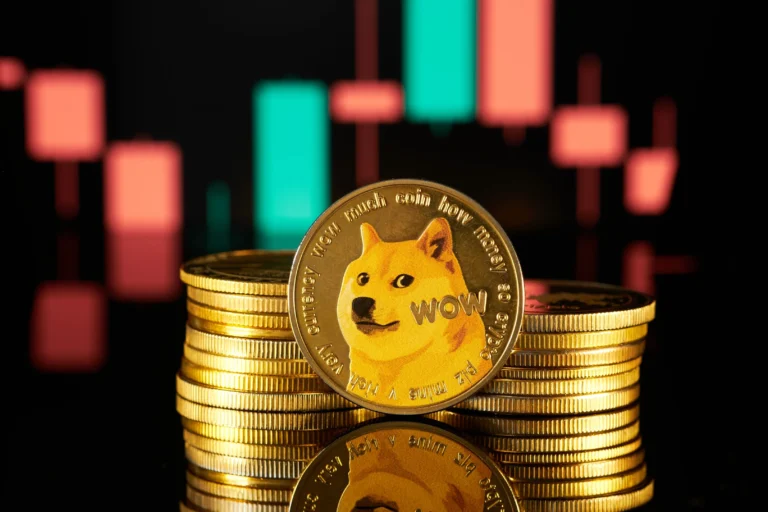Dogecoin (DOGE) with the image of a Shiba Inu dog called Kabosu as its logo, is one of the most popular and successful memecoins. It is considered an altcoin and was launched in December 2013.

USDT and Long-Term Investments: Prospects for Using Stable Cryptocurrencies in Investor Portfolios
What is USDT?
Interest in cryptocurrencies is steadily growing, but many people are hesitant about their decisions due to the difficulty of predicting the prices of even well-known coins like Bitcoin and Ethereum. In this context, stablecoins are useful. For instance, USDT, the largest stablecoin in the world, deserves attention. The USDT rate is closely tied to the dollar, and the company claims that each token is backed by reserves.
Tether uses PoS and PoR methods to verify solvency. These systems allow for checking corresponding dollar reserves, confirmed by audits. The Tether stablecoin is centralized, as Tether Limited issues new tokens and holds the reserves, and can also control the blockchain.
The Role of USDT in Preserving Investment Value
USDT can be useful for storing funds and simplifying international payments and cryptocurrency trading, as well as investing in projects and ICOs, making it attractive for those looking to avoid the volatility of other cryptocurrencies. Converting assets into USDT helps protect funds from market fluctuations, keeping their value stable. On exchanges, trading pairs like btc/usdt, xrp/usdt, and eth/usdt are common.
USDT is used in various blockchain projects and smart contracts. It is a popular means of exchange within the ecosystems of various blockchain platforms.
Smart contracts on the blockchain can use USDT for automatic payments or fulfilling contract conditions, ensuring transparency and reliability in interactions between participants.
Low fees and stability attract users compared to altcoins using the Proof of Work consensus. However, the project is criticized for its lack of transparency and the absence of audit results, despite promises since 2017. Instead, quarterly reports are published.
There are other projects pegged to the dollar. Interest in them increased after the USDT rate dropped to $0.95 in May 2022, causing market panic. Similar drops have occurred before. Despite this, Tether remains a popular means of storing cryptocurrencies, similar to fiat money. However, some analysts doubt the full backing of USDT with real USD assets.
Returning to the question of the reliability of USDT—the largest stablecoin with a current capitalization of $112 billion.
For beginners, USDT is an excellent choice for integration into the cryptocurrency industry. This stablecoin can be easily stored, used to purchase goods, and utilized as desired.
Using USDT for Portfolio Diversification
Diversification is a strategy of spreading investments across various assets and methods to reduce risks and enhance profitability. Including stablecoins like USDT in a portfolio can serve as a means of hedging risks in falling markets.
There are two approaches to diversification. The first approach involves distributing funds among assets of the same type, such as stocks of several oil or pharmaceutical companies. This method helps protect against the risk of default by one company but does not protect against a general economic downturn. If oil prices drop sharply, the stocks of all oil companies will suffer, and such diversification will not be effective.
The second approach to diversification is to spread investments across different sectors of the economy. An example is the distribution of funds between bonds and stocks. The cryptocurrency market also provides opportunities for such diversification. To diversify a crypto portfolio, funds can be allocated among different types of tokens, various industries, and assets related to cryptocurrencies and blockchain.
Using USDT and other crypto assets can enhance portfolio resilience. Investors should consider different asset classes and industries when forming their strategies to effectively manage risks and take advantage of various market opportunities.
Risks and Limitations of Using USDT in Long-Term Investments
One of the main negative aspects of using USDT is the reputation of its developer. The owners of this company also manage the cryptocurrency exchange Bitfinex, which fell victim to a hack leading to the loss of 120,000 BTC. These losses amount to around $5 billion, significantly undermining trust in the exchange and its clients.
Many analysts express doubts about the backing of USDT with reliable assets. Only 44% of Tether’s assets were reported in short-term US Treasury bills, while the rest are in bank deposits, corporate bonds, and loans to undisclosed firms. This raises some concerns. In unfavorable scenarios, risky assets may lose value, and Tether’s liabilities could exceed its available assets.
Purely algorithmic stablecoins, such as UST, lack real backing and can begin a self-destructive process in crisis situations. Unlike them, fiat-backed stablecoins like USDT have a more robust structure because they are backed by real financial assets. However, their collapse can develop hiddenly and not be obvious for a long time.
Unlike traditional banks, which must publish detailed audited reports, Tether operates in a less transparent environment. This increases the likelihood of problems and a lack of trust in the company. In a crisis on financial and cryptocurrency markets, when asset values drop and the risk of bankruptcy of major companies rises, Tether’s asset situation could worsen.
Nervousness in the cryptocurrency market is growing. Recent scandals with crypto companies have reduced optimism among market participants. In such conditions, negative news about Tether could provoke panic and a mass sell-off of USDT in investor portfolios.
Using USDT in long-term investments carries risks related to asset transparency, risk management, and overall market nervousness. Investors should carefully assess potential threats and consider all possible limitations when including USDT in their portfolios.
For the safe use of USDT, it is important to follow several key recommendations:
- Verify the authenticity of the platform or exchange: Always ensure that the platform or exchange where you plan to use USDT is reliable and verified. Use only reputable and well-known resources, such as Coin24.
- Protect private keys and passwords: Never share your private key or password with third parties. Failure to follow this rule can lead to unauthorized access to your wallet and loss of funds.
- Follow news and updates: Regularly monitor news and updates from the USDT development team. They often provide information about potential security threats and offer useful tips for user protection.
- Comply with the law: It is important to be aware of current legal regulations and adhere to them when using USDT. This will help avoid problems with law enforcement and ensure the legality of your cryptocurrency transactions.
Prospects for Using USDT in Long-Term Investments
At the moment, USDT is best considered as a means of preserving funds. The main advantage of the stablecoin lies in its price stability. USDT mining is impossible, as it occurs with other cryptocurrencies. Tether’s issuance is controlled by Tether Limited Inc. This differentiates USDT from decentralized cryptocurrencies and eliminates the possibility of mining it by miners.
For the safe and effective use of USDT, it is important to follow recommendations on fraud protection, keep track of news and updates from developers, and comply with legal regulations. In long-term investments, USDT is better not to be considered for speculation on exchange rate fluctuations.
USDT simplifies international payments, as blockchain-based transfers can be performed quickly and without intermediaries, reducing costs and transaction time. This is especially important for companies trading with foreign partners, where bank transfers can be slow and expensive.
Users often inquire about finding a USDT to UAH exchange, as it may be the only way to buy and sell dollars and withdraw currency abroad, bypassing restrictions. In this case, we recommend paying attention to a reliable service such as Coin24.
Start your crypto exchange with Coin24

Exchange BTC, ETH, USDT and more — cash or card

Secure and fast crypto exchange since 2018



